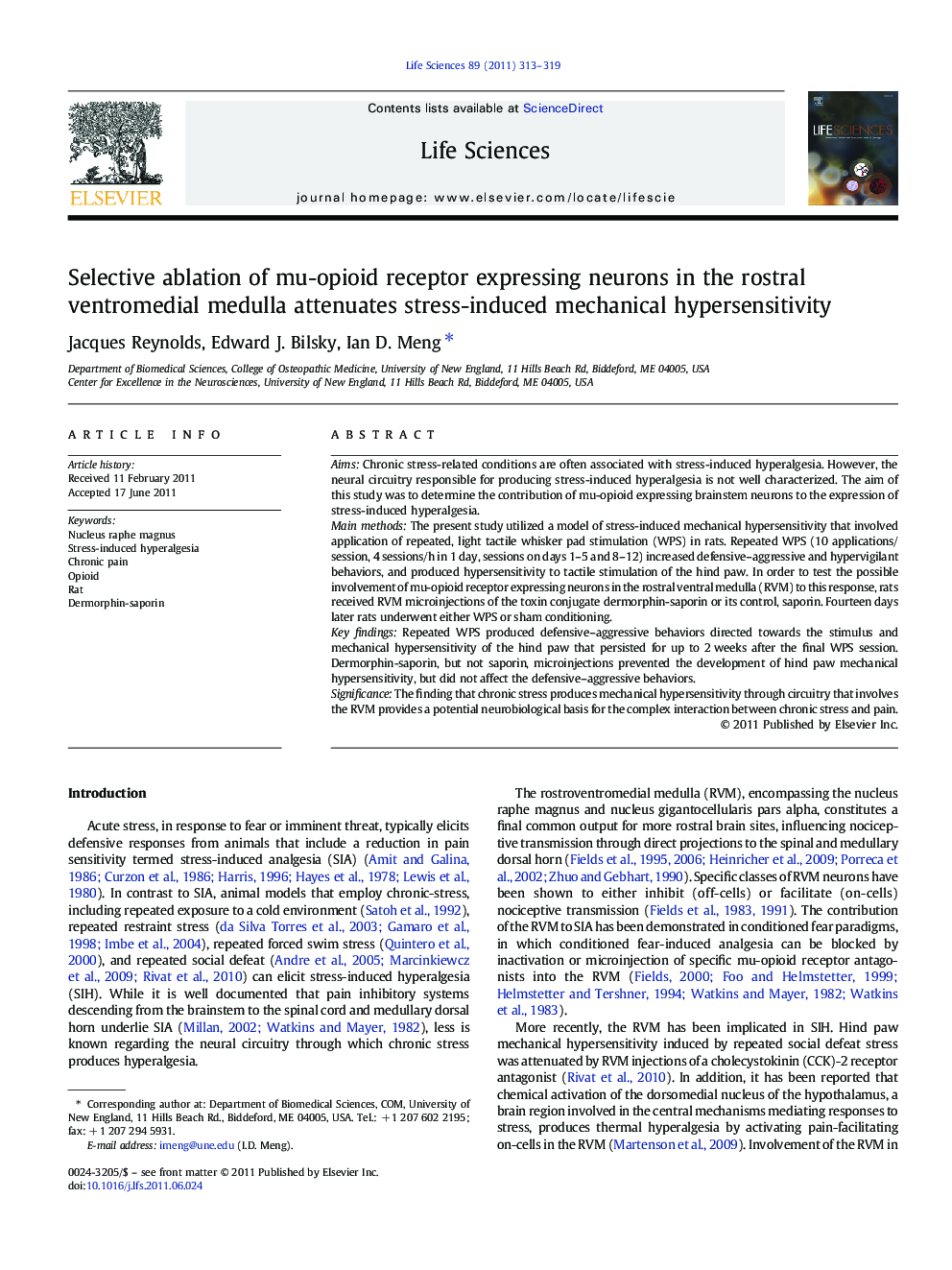| Article ID | Journal | Published Year | Pages | File Type |
|---|---|---|---|---|
| 2551840 | Life Sciences | 2011 | 7 Pages |
AimsChronic stress-related conditions are often associated with stress-induced hyperalgesia. However, the neural circuitry responsible for producing stress-induced hyperalgesia is not well characterized. The aim of this study was to determine the contribution of mu-opioid expressing brainstem neurons to the expression of stress-induced hyperalgesia.Main methodsThe present study utilized a model of stress-induced mechanical hypersensitivity that involved application of repeated, light tactile whisker pad stimulation (WPS) in rats. Repeated WPS (10 applications/session, 4 sessions/h in 1 day, sessions on days 1–5 and 8–12) increased defensive–aggressive and hypervigilant behaviors, and produced hypersensitivity to tactile stimulation of the hind paw. In order to test the possible involvement of mu-opioid receptor expressing neurons in the rostral ventral medulla (RVM) to this response, rats received RVM microinjections of the toxin conjugate dermorphin-saporin or its control, saporin. Fourteen days later rats underwent either WPS or sham conditioning.Key findingsRepeated WPS produced defensive–aggressive behaviors directed towards the stimulus and mechanical hypersensitivity of the hind paw that persisted for up to 2 weeks after the final WPS session. Dermorphin-saporin, but not saporin, microinjections prevented the development of hind paw mechanical hypersensitivity, but did not affect the defensive–aggressive behaviors.SignificanceThe finding that chronic stress produces mechanical hypersensitivity through circuitry that involves the RVM provides a potential neurobiological basis for the complex interaction between chronic stress and pain.
